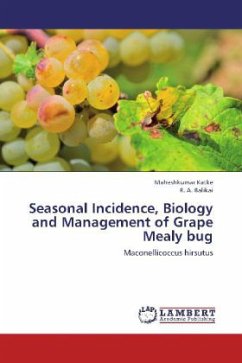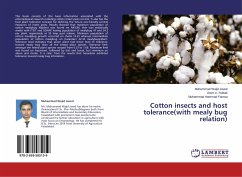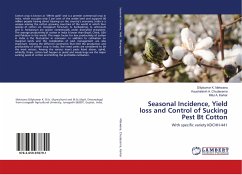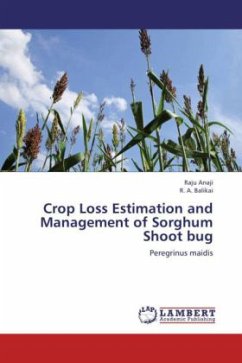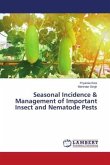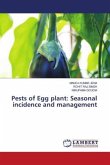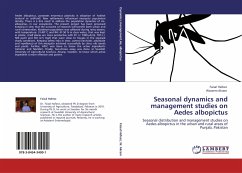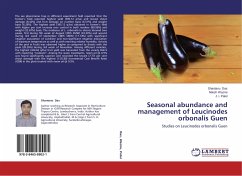The incidence of grape mealy bug correlated positively and significantly with maximum temperature at one week lead time and during the week of observation. Where as, it correlated negatively and significantly with minimum temperature at one, two, three and four weeks lead time. Similarly, it also correlated negatively and significantly with morning and afternoon relative humidities that existed during the week of observation, one, two, three and four weeks lead time. The female had three nymphal instars while the male had four. The total life cycle of grape mealy bug took more days during winter than summer. The nymphal period, adult longevity and fecundity were more during winter than summer irrespective of hosts. Similarly, the above parameters were more when reared on pumpkin as compared to sprouted potato irrespective of seasons. Dimethoate 30 EC @ 1.7 ml + Fish oil rosin soap @ 5 g/l recorded highest net profits of Rs. 79,035/ha followed by dimethoate 30 EC @ 1.7 ml/l with Rs. 77,835/ha and were at par with each other. The treatments viz., dimethoate 30 EC @ 1.7 ml/l, Verticillium lecanii @ 2 g/l, Metarhizium anisopliae @ 2 g/l and Clerodendron inerme @ 5% were economical.
Bitte wählen Sie Ihr Anliegen aus.
Rechnungen
Retourenschein anfordern
Bestellstatus
Storno

